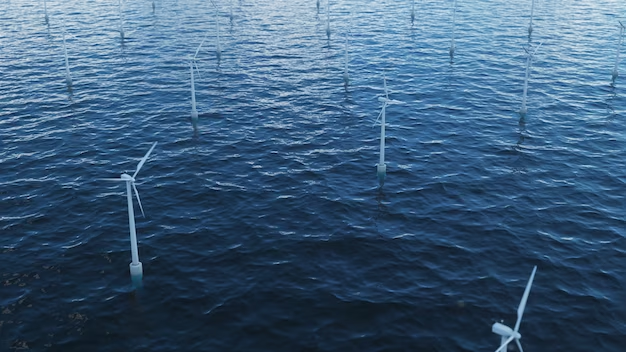When discussing electricity’s ability to travel through water, it’s important to understand the fundamentals. Pure water, surprisingly, isn’t a good conductor of electricity. This changes drastically when salts and other impurities are present in the water, which render it a potent conductor. The distance that electricity can traverse in water, therefore, largely depends on the water’s content and the nature of the electric current.
Key Factors Affecting Electricity’s Journey in Water
| Factor | Description |
|---|---|
| Purity of Water | Pure water, stripped of minerals and impurities, is a poor electrical conductor. The presence of salts and other impurities, such as magnesium and calcium, enhances conductivity. |
| Temperature | An increase in temperature generally enhances electrical conductivity, as the ions have more energy to move. |
| Electric Current Nature | The nature of the current, whether direct (DC) or alternating (AC), affects the distance electricity travels. |
| Voltage | Higher voltages can push the electric current further, but also increase the risk of harm and energy loss through heat. |
| Frequency | For AC, higher frequencies result in less penetration due to the skin effect. |
Dissipation of Electric Current in Water
The dissipation of electric current in water is primarily attributed to three major factors:
- Resistance: The resistance in water is much higher than that in most conductive materials, like metals. This leads to a significant loss of electric current;
- Inverse Square Law: According to this law, the intensity of an electric current decreases with the square of the distance from its source;
- Ionization of Water Molecules: Water is a polar molecule and can be ionized, which can interfere with the uniform flow of electric current.
Resistance
Water, especially pure water, has a high resistance compared to most conductive materials.
Consider the following table illustrating the resistivity of some materials for comparison:
| Material | Resistivity (Ohm meter) |
|---|---|
| Copper | 1.68 x 10^-8 |
| Aluminum | 2.82 x 10^-8 |
| Water (Pure) | 2 x 10^5 |
| Water (Sea) | 0.2 |
Inverse Square Law
The inverse square law applies to various physical phenomena, including the dissipation of electric current in water. The law states that the intensity of an effect (such as illumination, gravitational force, or in this case, electric current) decreases with the square of the distance from its source.
Here’s how it applies:
- At a distance of 1 meter from the source, let’s assume the current’s intensity to be 100%;
- At a distance of 2 meters from the source, the current’s intensity would be (1/2)^2 = 25% of the original;
- At a distance of 3 meters from the source, the current’s intensity would be (1/3)^2 = approximately 11% of the original.
Ionization of Water Molecules
Water molecules are polar, meaning they have a slight positive charge on one side and a slight negative charge on the other. When an electric current passes through water, it can cause the water molecules to ionize, or break up into ions. This process can interfere with the flow of current, leading to its dissipation.
The Nature of Electric Current

The nature of the electric current, namely whether it is Direct Current (DC) or Alternating Current (AC), has a significant impact on its propagation through water. This distinction is primarily due to a phenomenon known as the ‘skin effect’.
The following are the key factors that contribute to the differences between DC and AC in water:
| Type of Current | Description | Propagation in Water |
|---|---|---|
| Direct Current (DC) | Characterized by a constant flow of electric charge in one direction. DC can propagate relatively far in water as the skin effect is absent. | Penetrates deeply into water. |
| Alternating Current (AC) | Unlike DC, AC oscillates back and forth, changing its direction periodically. AC is more affected by the skin effect, causing it to travel along the water’s surface. | Travels more along the surface of water. |
Direct Current (DC)
Direct Current (DC) is an electric charge flow that consistently moves in one direction. The constant nature of DC allows it to penetrate deeper into water.
Here are some important characteristics of DC:
- DC is characterized by a constant, unidirectional flow of electric charge;
- Due to the absence of the skin effect, DC can propagate relatively far into water;
- DC is typically used in batteries, fuel cells, and solar cells;
- Applications of DC underwater include certain types of underwater equipment and devices, such as remotely operated underwater vehicles (ROVs).
Alternating Current (AC)
Alternating Current (AC) periodically changes direction, causing it to experience the skin effect when traveling through water.
Here are some key points regarding AC:
- AC changes its direction and magnitude periodically, typically in a sinusoidal manner;
- The skin effect causes AC to travel mainly along the surface of water rather than penetrating deep into it;
- AC is the type of current most commonly used in households and businesses due to its efficiency in power transmission over large distances (on land and through cables, not in water);
- AC’s susceptibility to the skin effect can limit its application for devices and systems operating underwater.
The Skin Effect
The ‘skin effect’ is a phenomenon wherein AC tends to flow near the surface of a conductor rather than through its entire cross-sectional area. This effect becomes more pronounced at higher frequencies, causing AC to primarily propagate along the water’s surface rather than deeply penetrating it.
Safety Considerations
While the electric current’s intensity in water reduces rapidly due to the factors described earlier, there are still significant safety risks, especially with high voltages. These concerns are particularly relevant in marine environments where electrical leaks can cause harm to marine life and humans, even at significant distances from the source.
The safety considerations can be broken down into three main areas:
| Humans | Marine Life | Safety Measures | |
|---|---|---|---|
| Direct Electrical Hazards | Risks from direct exposure to electric current may include shock, burns, or even fatal injuries. | Direct exposure to electric current can cause behavioral changes, injury, or death. | Regular inspections and maintenance, proper grounding, use of low voltage equipment in high-risk areas. |
| Indirect Electrical Hazards | Dangers due to electrical leak can result in electrocution or fire, causing harm to people. | Leaked electricity can alter the water chemistry or generate electro-magnetic fields, impacting marine life adversely. | Leakage detection and prompt repairs, installation of residual current devices (RCDs), regular environmental monitoring. |
Direct Electrical Hazards
The primary safety concern with electrical current in water is the direct exposure to humans and marine life.
Below are the key factors that contribute to this risk:
- Electrical Shock: Even at low levels, electric currents can cause muscle contractions, preventing a person from releasing the electrical source or escaping the electrically charged water. In severe cases, it can lead to heart failure;
- Injury to Marine Life: Many marine animals are extremely sensitive to changes in their environment. An electrical leak can cause significant harm to them, potentially even killing them.
Indirect Electrical Hazards
Electrical leaks in water can also create indirect hazards in the surrounding environment.
Here are the main indirect risks:
- Corrosion: Electrical leaks can accelerate corrosion in underwater metal structures, such as ships, marine installations, and pipelines. This could lead to severe structural damage over time;
- Ecosystem Disruption: An electrical leak can cause a localized disruption to the ecosystem, impacting the behavior and survival of various species and potentially leading to long-term ecological damage.
Safety Measures
Due to the serious potential risks associated with electric current in water, certain safety measures are crucial:
- Regular Inspections: Regular checks should be made on all underwater electrical systems to detect and fix any possible leaks;
- Proper Installation: Electrical systems must be correctly installed and insulated to prevent any accidental leaks;
- Voltage Regulations: Limiting the voltage used in underwater systems can help reduce the risk associated with electrical leaks;
- Emergency Procedures: Procedures should be in place to swiftly handle any detected electrical leaks, including the ability to quickly cut off the electric supply.
Conclusion
Electricity’s journey through water is a complex interplay of factors, including water purity, temperature, the nature of the current, and voltage. While it’s possible for electricity to travel considerable distances in water, particularly when impurities such as salts are present, the rapid dissipation of current due to the inverse square law significantly limits this distance. Ultimately, while it’s an interesting scientific and engineering challenge to understand and manipulate these factors, the emphasis should always be on ensuring safety when dealing with electricity near water.
FAQ
Saltwater is a good conductor of electricity due to its high mineral content. Nevertheless, the precise distance electricity can travel in saltwater depends on the voltage, current type, and salinity. The range could vary from a few meters to tens of meters, but the intensity of the current will reduce significantly as it moves away from the source.
Pure water is a poor conductor of electricity. It’s the impurities in water, such as salts and minerals, that make it conductive.
Yes, higher temperatures generally increase the electrical conductivity of water, allowing electricity to travel slightly further. However, the change is generally not significant enough to make a major difference in the overall distance.
Direct Current (DC) can propagate further in water due to the absence of the skin effect. However, Alternating Current (AC) tends to travel more along the surface of the water, which limits the distance it can travel compared to DC.








